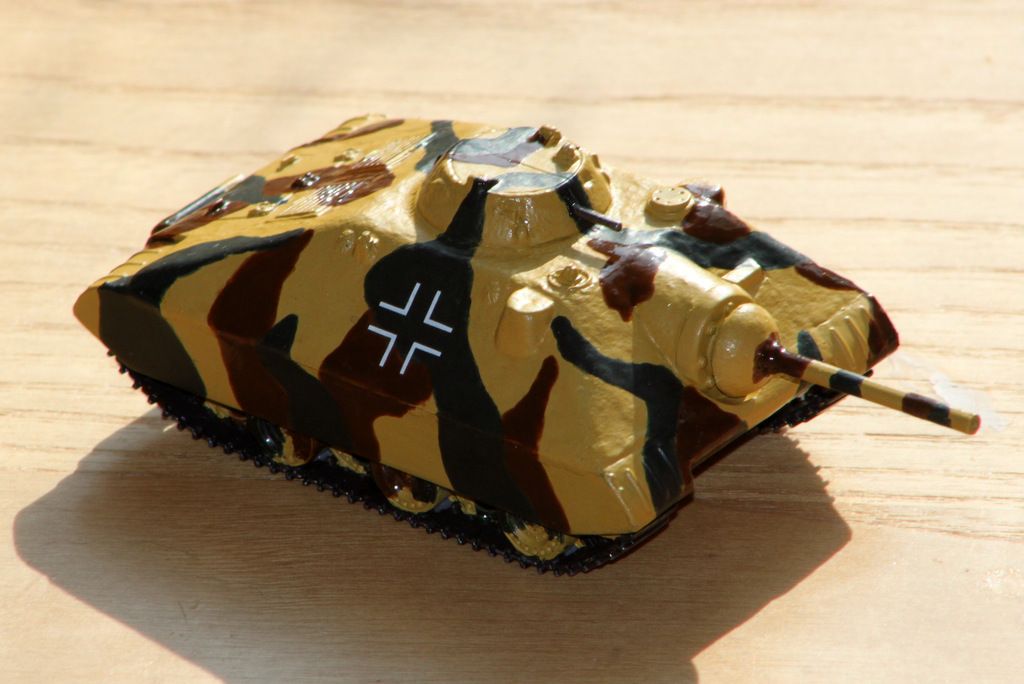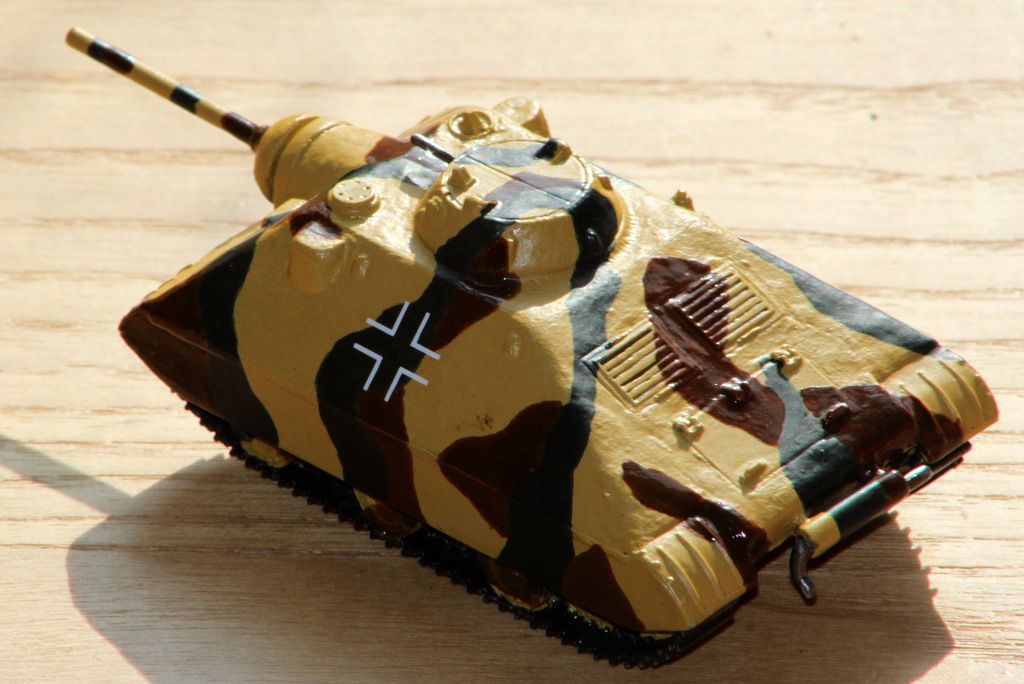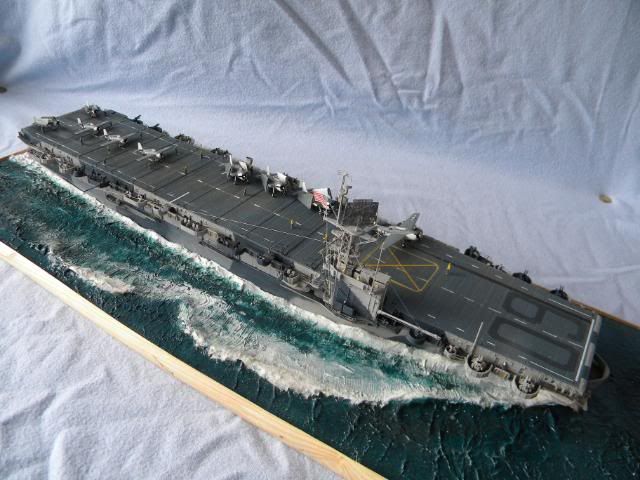Jagdpanzer Wolf - What if build
During the European Crisis of 1930-40 the British and French armies mounted cross border operations into Germany. It was found that the armour on the allied tanks, in particular the Char B and Matilda, was inpenetrable by the early German Panzers. Fortunately for the Germans, they were able to maintain control of the air in the region and all cross border incursions were halted by the Luftwaffes Stukas. Lessons were learnt from this and a request by the German High Command was submitted for a tank destroyer which would give the Wehrmacht superiority on the ground.
Initial designs were created using the chassis from existing tanks, in an effort to increase the rate of production. A stop gap solution was found in the Stug III, which reequipped units along the German border.
The extensive German spy network had been reporting on current Allied armour developments. US defence companies had been hard at work producing new designs in the arms race of the early 1940s. A number of heavy tanks had been observed under testing and assessments were made that the existing tank destroyers would have difficulty penetrating the armour of these new behemoths.
The German High Command sought to remve this threat urgently. A design specification was submitted for a tank destroyer that had a heavy armament, was well armoured and able to maintain a high speed over rough terrain.
Ideas began to appear on Adolf Hitlers desk but they failed in one major area, speed. In order to provide protection to the crew, thick plates of armour were fitted onto the prototypes. This made the vehicles extremely heavy and therefore difficult to manouver. What was required was a completely fresh approach to the idea.
The solution came from a 26 year old tank designer, named Gunter Wolf. Wolf had been experimenting with his ideas for increasing the strength of armour, whilst also cutting down the weight of the vehicle. New alloys were tested but improvements were minimal. By a chance fluke a solution was found. Whilst firing rounds at a test sample of armour, the armour came loose from its mount and angled away from the vertical. This was not noticed by the trigger happy tank crew who fired a further round and were shocked to see their round hit the target and shoot up into the air. On inspection of the sample it was noted that where previous rounds had penetrated the armour, the last shot had bearly made a dent. Wolf set to work with his findings and designed a vehicle using sloping armour. It was two thirds lighter than any design he'd created previously since the thickness of the armour could be reduced by half that of the sort fitted to heavy tanks such as the Tiger. Wolfs design met two of the three specifications, armour and speed. He now faced a new problem, the gun.
The 88mm gun from the Tiger was far too cumbersome for Wolfs small and light tank destroyer. It was found that the 75mm gun from the Panzer III was ideal, but it lacked the hitting power required to defeat the new Allied tank designs. Further ideas were tested which included lengthening the gun to increase the muzzle velocity, however, it was found that manouvering the vehicle with such a long gun was difficult, especially when in confined spaces.
The solution was provided by the German spy network. The British army had been experimenting with a new type of round called the armour-piercing discarding sabot (APDS). This technology was sent back to Germany and eventually found its way to Gunter Wolf. Trials were conducted using this new round with great success. The new round fired from the existing 75mm gun was found to have nearly twice the penetration power over the standard round fired by the 88mm gun. Wolf, a keen darts player, experimented with the idea of adding fins to these Sabot rounds, to make them spin in flight. This made the rounds more stable and increased their range. In order to provide protection from infantry, a 30mm Mk108 cannon was fitted on the roof of the vehicle, contained in its own turret.
Wolf had finally met the criteria set in the design specification and his design was sent to Skoda who were to produce the prototypes. Adolf Hitler personally travelled to see this new design in testing and was so impressed by what he saw, that he ordered that the vehicle was to be named after its chief designer, Wolf.
The Wolf went into mass production in June 1943 and by the start of the invasion of the Soviet Union on 01 Mar 1944, had equiped 70% of the tank destroyer units in the campaign.




....... is that another I spy below it?











































